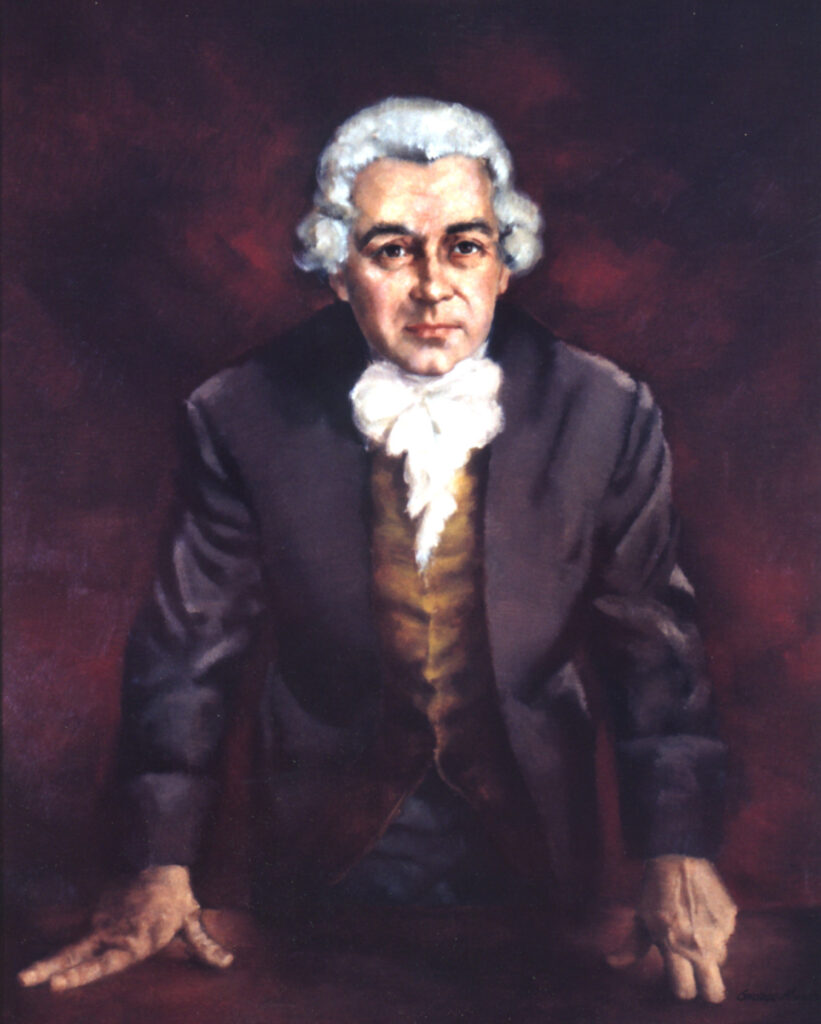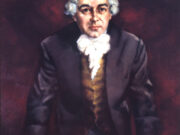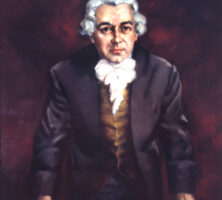Nathan Brownson was governor of Georgia for the last few months of the critical year of 1781, when Georgia was attempting to reestablish its government after the British were driven out of Augusta during the American Revolution (1775-83). He was the first physician to serve as governor of Georgia.

Courtesy of Georgia Capitol Museum, University of Georgia Libraries
Brownson was born in Woodbury, Connecticut, in 1742, to Abigail and Timothy Brownson. After he graduated from Yale University in New Haven, Connecticut, in 1761, Brownson studied to become a physician and went on to practice medicine in Connecticut. He appears to have married three times: first, in 1769, to Elizabeth Lewis; then to Elizabeth Dunham (or Donnom) in 1774; and finally to Elizabeth McLean in 1776. There were two children from his marriage to McLean.
In 1774 Brownson moved from Connecticut to Riceboro, Georgia, just south of Midway, in Liberty County. He quickly became a leader of the resistance to British tyranny. Brownson was one of the representatives from St. John’s Parish to the second full Provincial Congress, which met in Savannah in July 1775. On October 9, 1776, Georgians chose him as a delegate to the Continental Congress and reelected him to a second term on June 7, 1777.
The Georgia patriots were deeply divided. Economic status, family ties, politics, religion, geography, and the tensions generated by the defeats on the battlefield and British occupation of Georgia all contributed to the rise of two factions, one radical and one conservative, among the Georgia patriots during the Revolutionary War. At times it seemed that these two Georgia factions fought more with each other than they did with the British. In spite of his strong conservative beliefs, Brownson showed by his voting record in Congress that he was willing to consider the views of his political opponents. His proven ability to work with people of varying political beliefs probably helped to elect him governor in 1781.
After the British were driven out of Augusta in June 1781, however, the future of Georgia as an independent and free state depended on bringing these two warring factions together to reconstitute the state’s government. To lead them in this effort, the people of Georgia turned to Brownson, the physician and statesman, in the hope that he could begin the process of healing the wounds caused by the strife between the radical and conservative factions. On August 17, 1781, Brownson was unanimously elected speaker of the assembly, which then elected him governor.
Governor Brownson immediately set out to secure Georgia “against the machinations of Public and Private Enemies” and to take measures designed to restore peace, tranquility, and prosperity to the state. During his brief term of office the government of Georgia implemented measures to encourage the return of citizens who had fled the state because of the hardships of the war, and it passed legislation designed to obtain food and clothing for those whose farms and businesses were ruined by the war. The state also had to provide a defense against the continued threat of British troops and bands of armed Tories. On January 2, 1782, John Martin was elected to succeed Brownson as governor of Georgia.
Brownson’s career in public service continued after his term as governor. In June 1782 he was appointed deputy purveyor for southern hospitals. In the 1780s he served as a representative in the Georgia House of Assembly. He was a member of the Georgia convention that ratified the U.S. Constitution in 1788. In 1789 he served in the convention that rewrote Georgia’s constitution. He became the first president of the new Georgia senate and served in that office from 1790 to 1791. He joined with Abraham Baldwin, another Yale graduate, in working for the creation of a state-supported institution of higher education, which would become known as the University of Georgia.
On October 18, 1796, Nathan Brownson died at his home in Riceboro.






